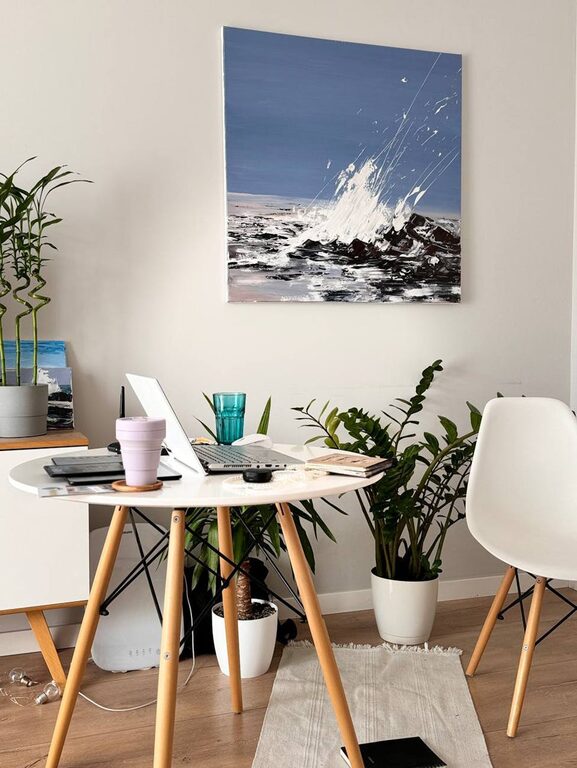Starting a small herb garden indoors is a rewarding way to bring fresh flavors into your cooking while adding a touch of greenery to your home. Whether you have a spacious kitchen or a cozy windowsill, growing herbs indoors can be simple and enjoyable. This guide will walk you through everything you need to know to get your indoor herb garden started and thriving.
Why Grow Herbs Indoors?
Indoor herb gardening offers several benefits:
– Year-round freshness: No matter the season, you can have fresh herbs ready for your meals.
– Convenience: Easily snip herbs when you need them without frequent grocery trips.
– Space-saving: Perfect for those without outdoor space or limited garden areas.
– Ambiance: Adds natural beauty and pleasant scents to your living space.
Choosing the Right Herbs
Some herbs adapt better to indoor conditions than others. Here are popular choices that generally do well indoors:
– Basil: Loves lots of light and warmth.
– Parsley: Tolerates partial shade, great for windowsills.
– Mint: Grows vigorously; best kept in a separate pot to prevent spreading.
– Thyme: Needs good light and dries out slightly between waterings.
– Chives: Easy to grow, require moderate light.
– Cilantro: Prefers cooler growing conditions and lots of light.
– Oregano: Thrives indoors if given enough sunlight.
Select herbs based on your cooking preferences and available space.
Materials You’ll Need
Before planting, gather these items:
– Containers: Pots with drainage holes are essential. Size depends on the herb; 4-6 inch pots work for most.
– Potting mix: Use a lightweight, well-draining potting soil formulated for indoor plants.
– Seeds or seedlings: Both work, but seedlings provide a faster start.
– Light source: A south or west-facing window is ideal. If natural light is limited, consider a grow light.
– Watering can: For controlled watering.
– Fertilizer: A balanced liquid fertilizer suitable for herbs.
Step-by-Step Guide to Planting
1. Choose Containers
Select pots with drainage holes to prevent waterlogging. Terra cotta pots are popular because they allow soil to dry out, reducing risk of root rot.
2. Prepare the Soil
Fill your containers with potting mix, leaving about half an inch from the top. Avoid using garden soil, which can compact and retain too much moisture indoors.
3. Plant Seeds or Seedlings
– For seeds: Follow the packet instructions on planting depth and spacing.
– For seedlings: Gently place them in the soil, filling around the roots and patting down lightly.
Water gently but thoroughly after planting.
4. Provide Adequate Light
Herbs generally require at least 6 hours of bright light daily. Place pots near sunny windows or set up grow lights if needed. Rotate plants weekly to ensure even growth.
5. Water Properly
Most herbs like to dry slightly between waterings. Check the top inch of soil; if dry, water until it drains out the pot’s bottom.
6. Fertilize Occasionally
Feed your herbs once or twice a month with a diluted liquid fertilizer to keep them healthy and growing vigorously.
Caring for Your Indoor Herb Garden
Pruning and Harvesting
Regular pruning encourages bushier growth:
– Trim leaves before flowering.
– Use scissors to snip herbs rather than pulling leaves.
– Harvest no more than one-third of the plant at a time to avoid stressing it.
Pest Management
Indoor herbs can occasionally attract pests like aphids or spider mites. Inspect plants regularly and wipe leaves with a damp cloth or spray with insecticidal soap if needed.
Adjusting Environment
– Humidity: Indoor air can be dry, especially in winter. Increase humidity around plants by grouping pots or using a small humidifier.
– Temperature: Most herbs prefer temperatures between 60 and 75°F (15-24°C). Avoid placing plants near heaters or cold drafts.
Troubleshooting Common Issues
– Leggy plants: Usually caused by insufficient light. Move herbs closer to windows or add grow lights.
– Yellow leaves: May indicate overwatering or poor drainage.
– Slow growth: Could be due to lack of nutrients or light. Fertilize and check light levels.
Tips for Success
– Start with easy-to-grow herbs like basil, mint, and chives.
– Label your pots to keep track of different herbs.
– Experiment with different containers and locations to find what works best.
– Keep a journal of your watering and fertilizing routine.
Conclusion
Starting a small indoor herb garden is a simple and enjoyable project that rewards you with fresh, flavorful herbs accessible all year long. With a bit of planning and care, your indoor herb garden will flourish and bring a touch of nature to your home cooking. Happy gardening!
—
By following this guide, you’ll be well on your way to growing a beautiful and productive herb garden indoors. Don’t forget to share your progress and favorite herb recipes with friends and family!

